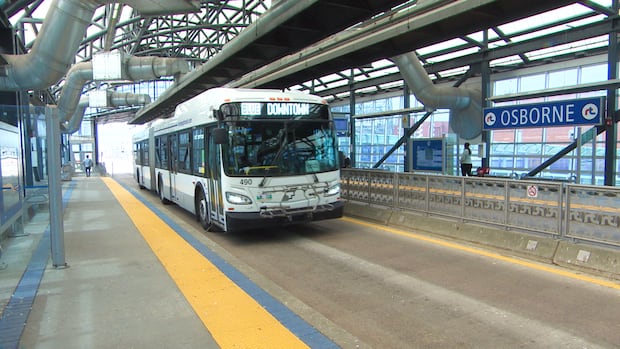Massive Winnipeg Transit network overhaul takes effect Sunday
New network promising more frequent service along major routes will be 'game-changer,' says transit advocate

Winnipeg Transit will undergo what it says is the most significant single-day transformation in its history on Sunday, when it launches a new bus network that changes just about every route in the city.
"Pretty much nothing is going to remain the same after Sunday," said Bjorn Radstrom, Winnipeg Transit's manager of service development.
The new network replaces Winnipeg's existing "hub-and-spoke" system — with buses often following meandering routes between outlying neighbourhoods and the downtown — with a more grid-like "spine-and-feeder" model, featuring high-frequency routes along major roads, connected to smaller routes running through residential areas.
With straighter routes, fewer stops and routes that avoid travelling through congested downtown traffic, Winnipeg Transit officials say the new network will be more reliable and efficient.
"The network we have right now was really designed for the city that we had in the '50s or maybe the '60s, where everybody was trying to get into downtown in the morning to go to work, and out of downtown in the afternoon. But the city's really changed and everybody's travel patterns have changed," Radstrom told CBC.
The new network reflects modern travel needs like shopping and more cross-town trips, he said.
WATCH | A Winnipeg Transit video outlines the new system:
The network will have four types of transit lines: rapid transit, frequent express, frequent and direct.
Wait times between buses on the new "frequent" and "frequent express" lines are expected to be 15 minutes or less during peak times, Transit says.
However, the network relies on passengers transferring buses more often and walking longer distances to get to stops.
Winnipeg Transit posted the new schedules online May 1, adding a feature to its website that allows riders to plan their trips using the new routes.
Radstrom encourages users to try different tools, like Navigo, the Winnipeg Transit app, and Google Maps to plan their routes.
Fewer bus stops
As part of its redesign, transit removed about 1,700 of the 5,200 stops in the city and installed about 460 new ones, for a total of about 4,000 bus stops in the new system.
While that may mean longer walks for some people to get to their stops, Radstrom says the new network will run more efficiently and reliably.
"Having all those extra stops really slows things down," he said.
To help people navigate the new system, Winnipeg Transit has sent "travel trainers," recognizable by their blue vests, to stops around the city. They will be out again next week along major routes.

Bus riders in southwest neighbourhoods like Waverley West will already be familiar with the new model. Buses in that area have followed the spine-and-feeder system since the southwest rapid transit corridor was completed in 2020.
Waverley West councillor and public works committee chair Janice Lukes said she's confident riders will see improvements.
"In the big picture, it's going to be great, for sure," she said.
But she acknowledged "there'll be some hiccups and some bumps, and there'll be things that will need adjustments."
"People need to report their issue to 311 and it will be addressed," said Lukes.
The head of the union that represents Winnipeg Transit operators encouraged riders to be patient, as the drivers are also learning the new routes.
"We're both excited for this to finally be rolled out and a little nervous [about] the impact," said Chris Scott, president of Amalgamated Transit Union Local 1505.
Kyle Owens, president of the advocacy group Functional Transit Winnipeg, said the new network's frequent service makes it a "game-changer," but said it could take weeks or months for riders to adjust and begin to realize its benefits.
"It takes time to rebuild a new relationship with that new system," said Owens, pointing out that many Winnipeggers have been frustrated by unreliable transit service in the past.
Radstrom says the city considered a phased approach to the changes, but decided it was not possible due to how interconnected the network is.
"In the end, it was all or nothing," he said.
